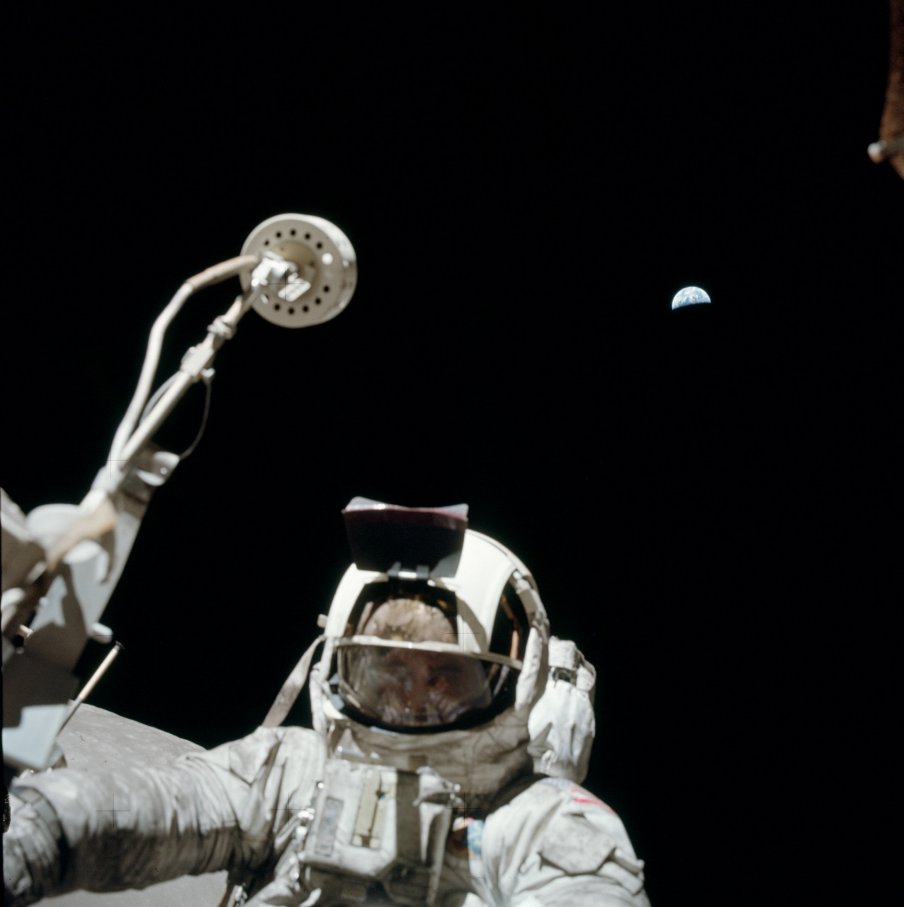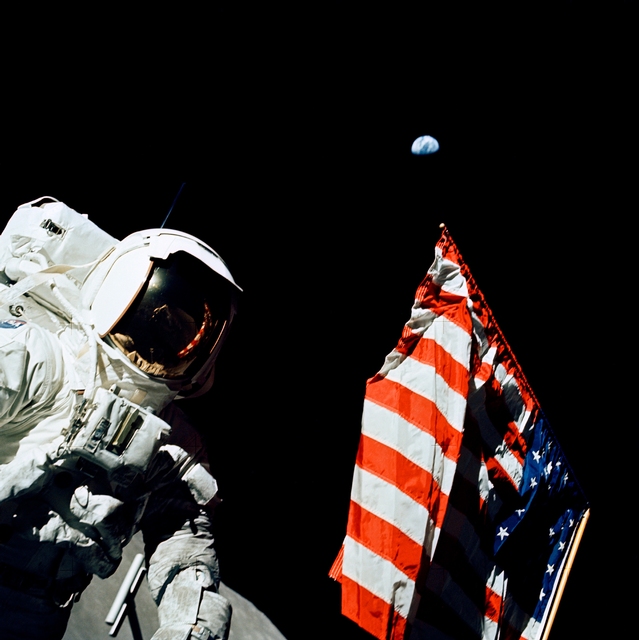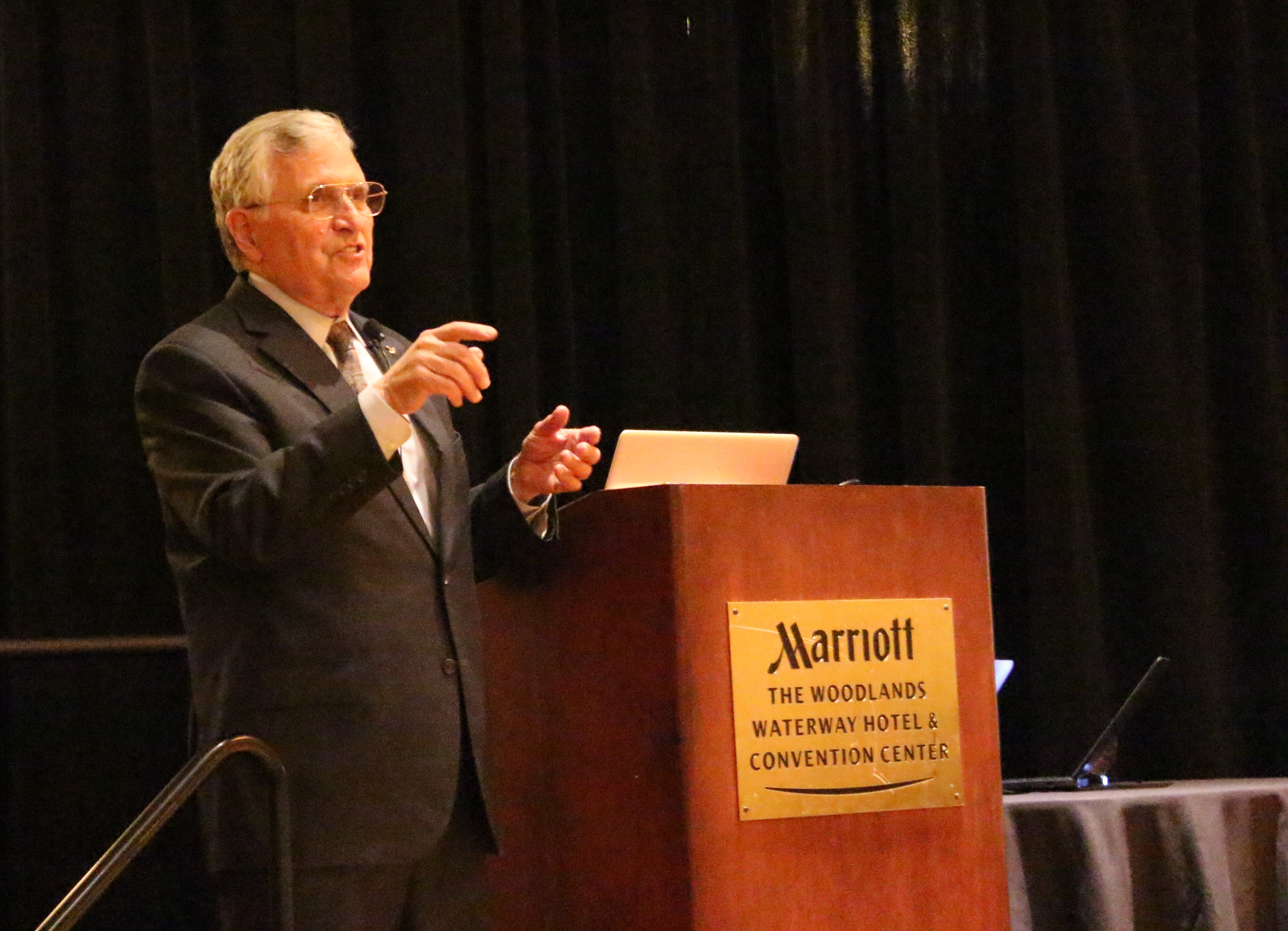
Q&A with Apollo 17's Jack Schmitt: Remembering the Past, Looking to the Future
Harrison "Jack" Schmitt was the lunar module pilot on the sixth and final human landing on the moon, NASA's Apollo 17 mission, which launched 45 years ago today (Dec. 7). He is eager to see a rebirth of the zeal for U.S. human space exploration that boosted Schmitt and Apollo 17 Cmdr. Eugene Cernan onto the lunar surface while Ronald Evans circled that airless world as command module pilot.
Apollo 17 broke several human-spaceflight records, including the longest crewed lunar landing flight (301 hours and 51 minutes), the longest lunar surface extravehicular activities (22 hours and 4 minutes), the largest lunar sample return (an estimated 249 lbs., or 113 kilograms) and the longest time in lunar orbit (147 hours and 48 minutes).
A professional geologist, Schmitt is a member of an elite club, one of the "dusty dozen" to have strolled across the lunar landscape. Schmitt logged 301 hours and 51 minutes in space — of which 22 hours and 4 minutes were spent in lunar surface exploration. [Apollo 17: The Last Apollo Moon Landing in Pictures]

Schmitt retired from NASA in August 1975 to run for the U.S. Senate. He was elected to that post and represented the people of New Mexico in the Senate for a six-year term.
Schmitt is the author of the book "Return to the Moon: Exploration, Enterprise, and Energy in the Human Settlement of Space" (Copernicus, 2006). He advocates a private, investor-based approach to returning humans to the moon — to extract helium-3 for energy production, to use the moon as a platform for science and manufacturing, and to establish permanent human outposts, furthering our sense of destiny as explorers.
Space.com caught up with Schmitt recently to discuss the Apollo program and the future of American deep-space exploration.
Space.com: How does Apollo resonate today in putting America on a new space trajectory?
Get the Space.com Newsletter
Breaking space news, the latest updates on rocket launches, skywatching events and more!
Jack Schmitt: If the president proposes a major new initiative in the human exploration of deep space to Congress, such as a return to the moon as a cornerstone of missions to Mars and beyond, Congress and the administration should evaluate the successful implementation of a comparable space effort, namely Apollo.

We actually are in a much better technical and knowledge position today to undertake a moon-Mars initiative than we were just prior to the start of Apollo. Our ability to manage a large, milestone-driven program, however, will need to be greatly enhanced.
Space.com: What were the hallmarks that ensured the success of the Apollo program?
Schmitt: The keys to the success of the Apollo program included the existence of several elements — specifically, a sufficient base of technology, as well as a large reservoir of patriotic young engineers and skilled workers. President Eisenhower's initiative to begin Saturn V launch vehicle development in January of 1960 was a major element in making President Kennedy's challenge achievable. Also, there was a pervasive environment of national unease, particularly stemming from the catalytic event of the Soviet Union's flight of cosmonaut Yuri Gagarin in April 1961 — the first human to orbit the Earth. [Lunar Legacy: 45 Apollo Moon Mission Photos]
Project Apollo also succeeded thanks to an articulate, persuasive and patriotic president and Congress, and commitment of roughly a 100 percent management reserve of funding. Lastly, there were tough, competent, disciplined and courageous managers setting their sights on a goal that could be accomplished in a decade, and a working environment of liberty.
Space.com: Do you sense any other elements that are needed to further a new U.S. space agenda?
Schmitt: All these keys to success must accompany a moon-Mars-deep-space program with several additions, fueled by a permanent national commitment to deep-space exploration. There also needs to be improved education in science, technology, engineering and math (STEM) skills, and critical thinking. Another factor is maintenance of an average workforce age of less than 30 years. One bottom line I'll add is elimination of the political aversion to taking necessary risks. A focused Apollo-style management system will be needed. This system must "stay young, stay lean, stay risk takers."
Space.com: How does the moon play into your vision of the future?
Schmitt: A return to the moon appears to be essential to increasing significantly the probability of success of a Mars landing and exploration program and to maximizing the scientific return from such a program. Consideration of missions to Mars should include the value of returning to the moon as a means of dealing with many of the new technical and operational challenges Mars presents.
Space.com: Your thought on the role commercial space can play in moving space exploration forward?
Schmitt: Unlike the 1960s, the private sector is well positioned to support, as well as partner with, the government. It is time to move forward sooner rather than later. [Giant Leaps: Top Milestones of Human Spaceflight]
With current progress in the development of NASA's Space Launch System [rocket], the Orion spacecraft, as well as the landing design work done during the Constellation Program under President George W. Bush, the potential for partnership in lunar resource production has been greatly enhanced since my book, "Return to the Moon," was published.
Space.com: Can the moon be viewed as a private-sector opportunity with NASA spending research and development dollars in technology to send humans to Mars?
Schmitt: Yes, I think right now, it is fairly clear-cut. What it will be 100 years from now, I can't tell you. But if the private sector were successful in developing a supply of helium-3 from the moon, it would mean that a great deal of the technological capability to do Mars would have been developed. Once you have helium-3 going, I have always thought of the so-called consumables — oxygen, water, you name it. Those are a byproduct of the helium-3 operation.
You've got to have a space infrastructure that creates a demand for the oxygen and water. But it's not something that can support an investor-base business, unless the space facilities are there and the infrastructure is in place to use those resources.

Space.com: Any closing thoughts?
Schmitt: Let me make clear that America's return to deep-space exploration requires the unequivocal and sustained commitment of the nation, even more so than was required for the Apollo program because of the multidecadal nature of the effort.
Leonard David is author of "Mars: Our Future on the Red Planet," published by National Geographic. The book is a companion to the National Geographic Channel series "Mars." A longtime writer for Space.com, David has been reporting on the space industry for more than five decades. Follow us @Spacedotcom, Facebook or Google+. Originally published on Space.com.
Join our Space Forums to keep talking space on the latest missions, night sky and more! And if you have a news tip, correction or comment, let us know at: community@space.com.

Leonard David is an award-winning space journalist who has been reporting on space activities for more than 50 years. Currently writing as Space.com's Space Insider Columnist among his other projects, Leonard has authored numerous books on space exploration, Mars missions and more, with his latest being "Moon Rush: The New Space Race" published in 2019 by National Geographic. He also wrote "Mars: Our Future on the Red Planet" released in 2016 by National Geographic. Leonard has served as a correspondent for SpaceNews, Scientific American and Aerospace America for the AIAA. He has received many awards, including the first Ordway Award for Sustained Excellence in Spaceflight History in 2015 at the AAS Wernher von Braun Memorial Symposium. You can find out Leonard's latest project at his website and on Twitter.









